Looking for Flaws and Inclusions
Natural sapphires often contain tiny imperfections known as flaws or inclusions. These imperfections can be small mineral crystals, rutile needles, straight color banding, or fingerprint-like inclusions. To inspect for flaws and inclusions, you will need a jeweler’s magnifying glass with at least 10x magnification.
- Keep in mind that some fake sapphires, such as those made of lab-created sapphire, glass-filled sapphire or glass, may contain tiny air bubbles.
- It’s always a good idea to examine the sapphire from multiple angles to ensure you catch any imperfections that may only be visible from certain viewpoints.
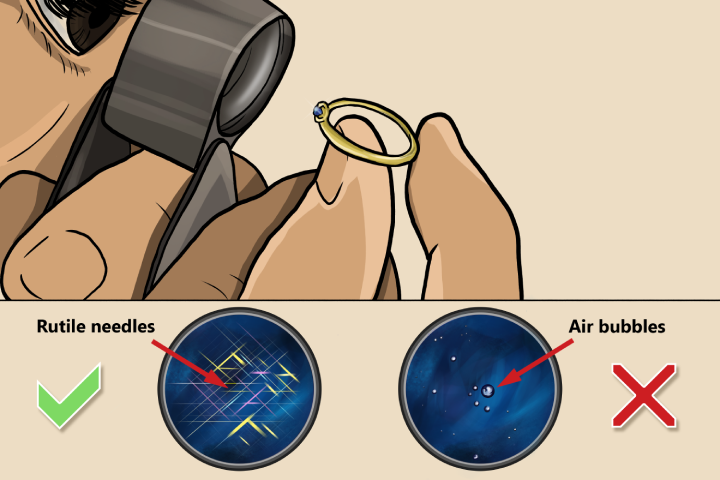
The Breath Test
To perform the breath test, hold the sapphire in front of your mouth and exhale a small breath onto it.
Real: Sapphires have excellent heat conductivity, so the fog should totally disappear in just one or two seconds.
Fake: It takes longer for the fog to fade.
Real: Sapphires have excellent heat conductivity, so the fog should totally disappear in just one or two seconds.
Fake: It takes longer for the fog to fade.
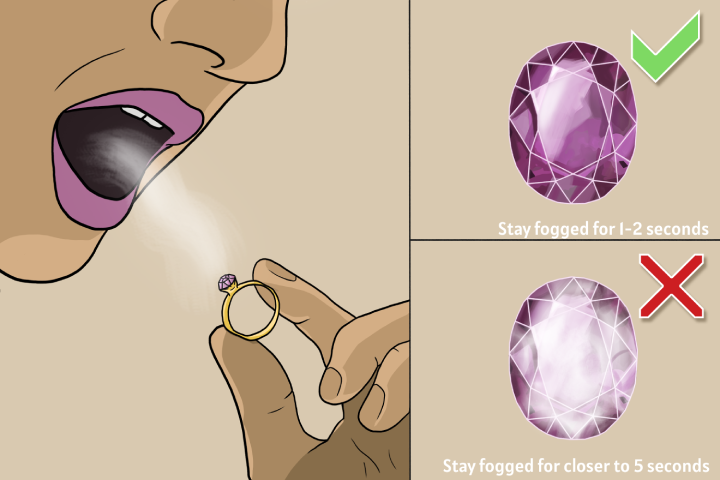
The Hardness Test
Sapphires rank 9 on the Mohs Hardness Scale, making them the second hardest gemstone after diamonds. To do this, you will need a masonry drill bit or a steel nail. Gently scratch the surface of the sapphire with the drill bit or nail. If the sapphire leaves a mark, it is likely fake.
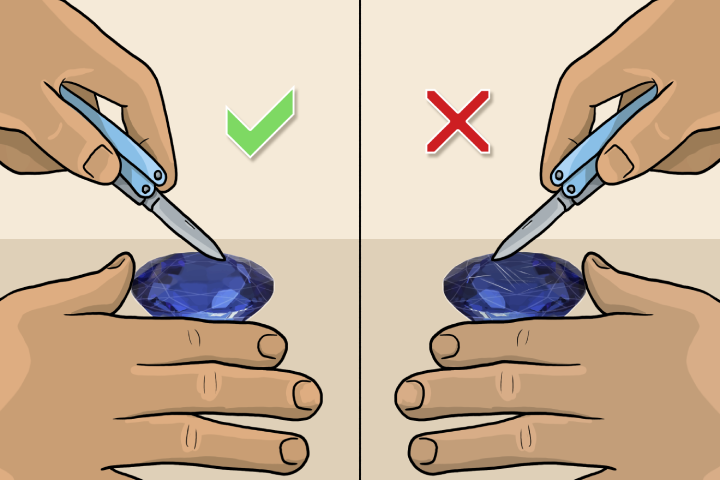
Examining Facet Wear
One way to determine the authenticity of your sapphire is to look for wear on the facets.
Real: Genuine sapphires are made of a strong and durable material, so they should not show signs of wear and tear easily.
Fake: If the edges of the facets look soft or worn, it is possible that the sapphire is fake. Fake sapphires, especially those made of glass, tend to wear down quickly and may develop a “dimpled” texture or slightly rounded facet edges.
Real: Genuine sapphires are made of a strong and durable material, so they should not show signs of wear and tear easily.
Fake: If the edges of the facets look soft or worn, it is possible that the sapphire is fake. Fake sapphires, especially those made of glass, tend to wear down quickly and may develop a “dimpled” texture or slightly rounded facet edges.
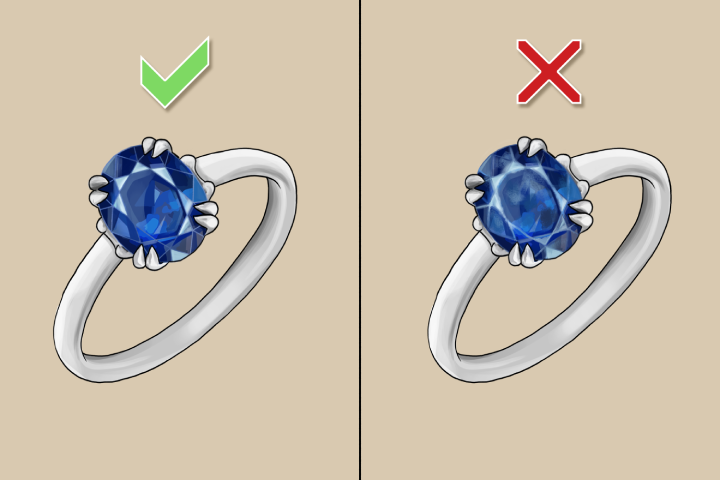
Observing Light Reflection
One way to tell if a sapphire is real is to observe how light reflects off of the stone. Turn off the lights in a room and hold a flashlight up to the sapphire.
Real: The light should only reflect the same color as the sapphire.
Fake: If the sapphire is made of glass, the light may reflect a variety of colors.
Real: The light should only reflect the same color as the sapphire.
Fake: If the sapphire is made of glass, the light may reflect a variety of colors.
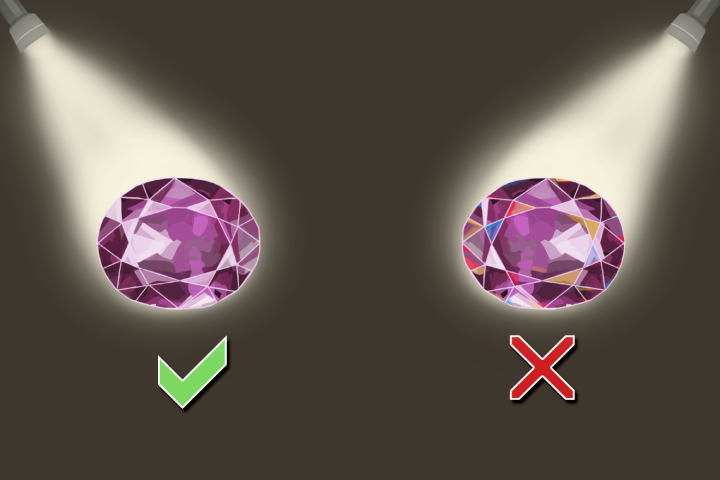
Identifying Glass-Filled Sapphires
Sometimes, low quality natural sapphires are treated with blue lead-glass to enhance their clarity and give them a vibrant blue color. These sapphires are known as composite sapphires and they are worth significantly less than natural, untreated sapphires. To identify a glass-filled sapphire, hold the stone up to a light source and look for criss-crossing blue lines. If you notice these lines, it is more likely to be a glass-filled sapphire.
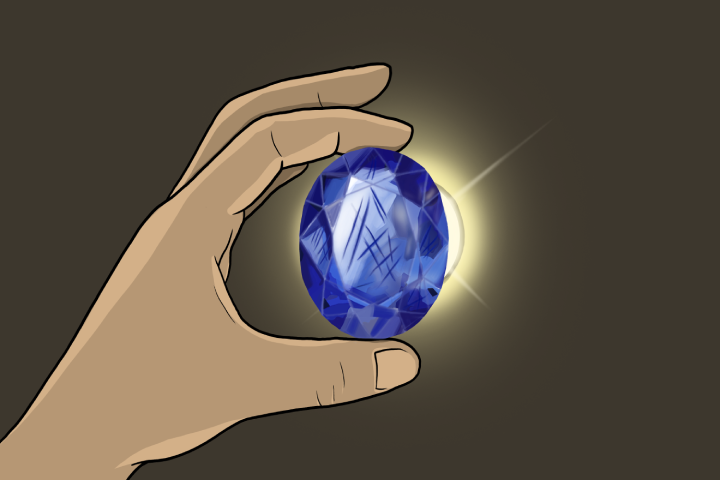
Identifying Titanium Diffusion-Treated Sapphires
The diffusion technique involves adding color-causing chemicals during heat treatment, resulting in a thin layer of color on the surface of colorless or light-colored sapphire. Lay a tissue over the light, then flip the sapphire upside down and hold it up to the tissue. If you can see color concentrations along facet junctions and the girdle edge, then the stone is very likely blue diffusion-treated sapphire.
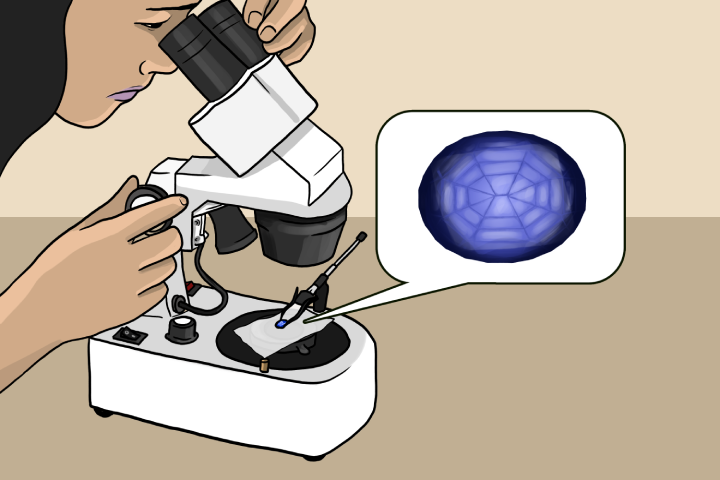
Ask the jeweler for information
If you are considering purchasing a sapphire from a jeweler, it is always a good idea to ask about the gem’s authenticity. Find out if the sapphire is natural or synthetic, and if it is natural, ask about any treatments it may have undergone, such as heat treatment, titanium diffusion, or glass filling. These treatments can significantly impact the value of the sapphire, so it’s important to have this information.

Tips for Authenticating a Sapphire
- It’s a good idea to use multiple methods to determine the authenticity of a sapphire, as no single test is foolproof.
- If you are unsure about the authenticity of a sapphire, seek the evaluation of a professional. They have the expertise and specialized equipment needed to accurately determine the gem’s authenticity.